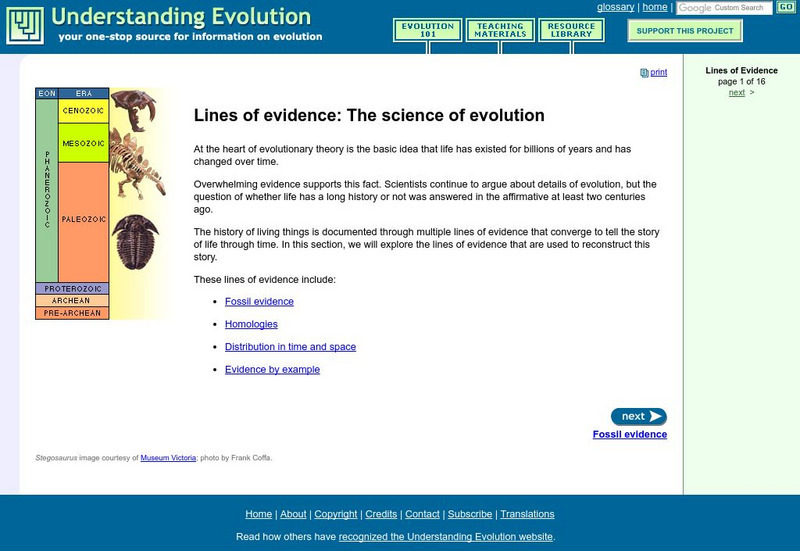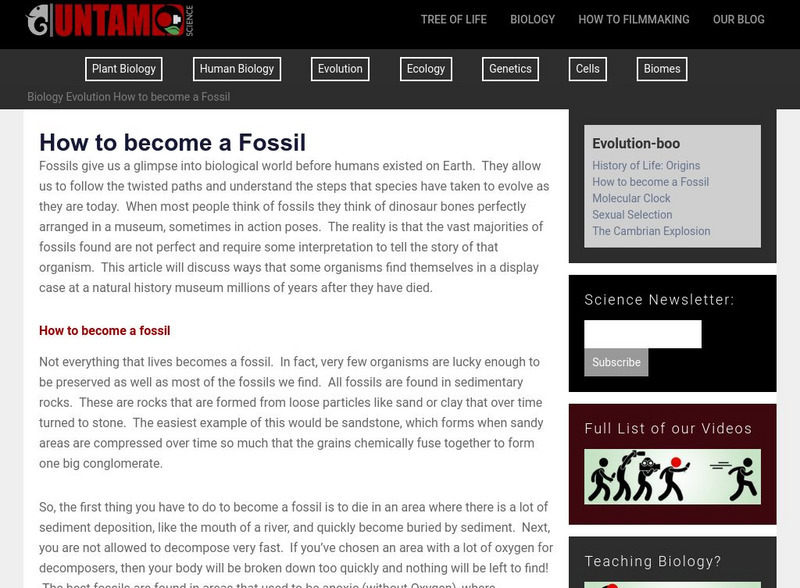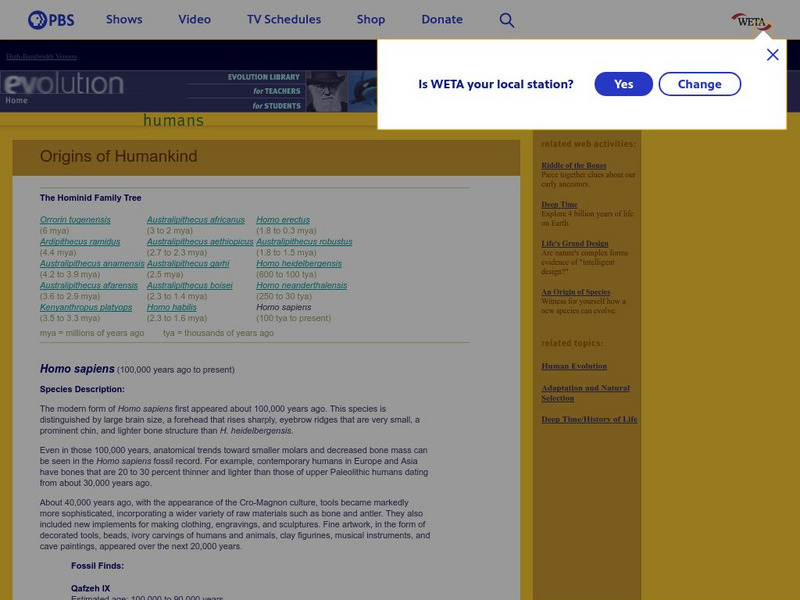University of California
University of California Museum of Paleontology: Fossil Evidence
Understanding Evolution provides evidence for evolution using fossils. There are also links to lesson plans.
University of California
Understanding Evolution: Lines of Evidence: The Science of Evolution
Evolution can be supported by the lines of evidence which are presented in this resource. Recognize these lines: fossil evidence, homologies, distribution in time and space, and evidence by example.
Untamed Science
Untamed Science: Biology: Evolution: How to Become a Fossil
Learn about what a fossil is, the different types that scientists use for study, and processes that form them. [2:57]
University of California
Ucmp: Learning From the Fossil Record
Fossils provide scientists with clues about Earth's past. This site from the University of California's Museum of Paleontology is great for exploring lots of information on fossils.
American Geosciences Institute
American Geological Institute: Evolution and the Fossil Record
The American Geological Institute has done an excellent job of defining and explaining evolution in this online booklet. Darwin, fossils, natural selection, and change over time are some of the concepts that are covered. Make sure to see...
Other
Exploring Origins Project: Exploring Life's Origins
Explore life's evolutionary history on the planet through molecular illustrations and animations. Pictorial evidence is based on origin of life research and theory.
Texas A&M University
Eco Systems: Story Time: Stephen Jay Gould
See how Stephen Jay Gould's early interest in baseball influenced his thought process as a scientist.
PBS
Pbs: Evolution: Origins of Humankind: Homo Sapiens
Read a description of Homo sapiens as a species, learn about the variety of Homo sapiens fossils that have been found, and discover evidence of the culture of these early people.
Other
Utct Digi Morph: Digital Morphology the University of Texas
A dynamic archive of information on digital morphology and high-resolution X-ray computed tomography of biological specimens.
Smithsonian Institution
National Museum of Natural History: Paleobiology: Geologic Time: The Oligocene
Travel through Earth's history to learn about the Oligocene time period, which is characterized by the appearance of most of the living families of mammals.








